As you may have learned from part one of this series, there is a 3D printing metal evolution that has been going on for the past two years. Aside from the much-publicized hype in binder jet by HP, Desktop Metal, GE and Markforged there are alternatives firms working away from the limelight. Companies such as One Click Metal, LMI, Sharebot, Xact Metal and Meltio have been rolling out low-cost metal 3D printers. They aim to make accessible metal printers that are easy to use in semi-factory environments. This is a considerable market, potentially taking metal 3D printing to the hundreds of thousands of workshops, factories and engineering firms worldwide. This is the biggest opportunity you’ve never thought about. Today, we’re going to look at some of the market participants and what they need to solve.
Players
Don’t hate me, this list is not exhaustive.
One Click Metal

One Click Metal is a German firm that is completely under the radar for most people but has a lot of potential. The company is essentially a startup within Trumpf, one of the world’s largest suppliers of industrial lasers and metal forming equipment. Trumpf is dependable and has an incredible depth of knowledge in lasers and metalworking; it is, however, slow and stodgy. For them to go the Skunkworks route and enable this faster innovative startup is therefore nothing short of brilliant.
You can get a Bold series laser powder bed fusion (PBF) 3D printer for $55,000. An Mpure unpacking station is $21,000. The station recycles powder, sieves it and helps you unpack parts. You can also get a starter package for aluminum, stainless steel and tool steel. Consumables are sold in 10-kilo cartridges and include a deposit for the cartridge. The company says it wants to make pricing on consumables reasonable. All of the pricing for all of the components is transparent and available in an online shop. The company also has a monthly subscription for a software package at different tiers that can prep and simulate parts, as well as a training program.
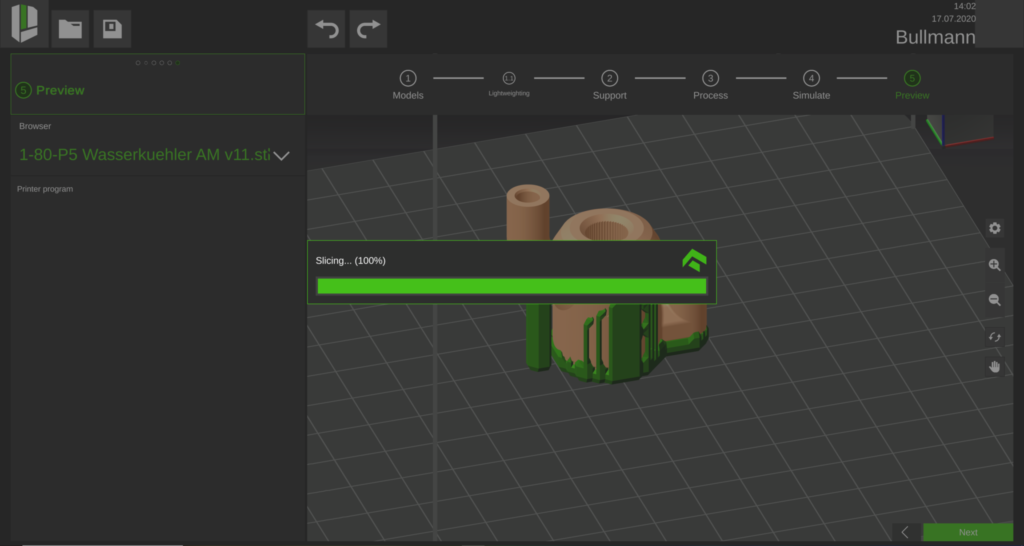
All in all, I love the transparency and completeness of the proposition that One Click Metal offers. The fact that it has the Trumpf name and expertise behind it, as well, is a huge plus for me. What they don’t seem to have is a lot of aggressiveness and killer instinct for marketing and growth.
Laser Melting Innovations
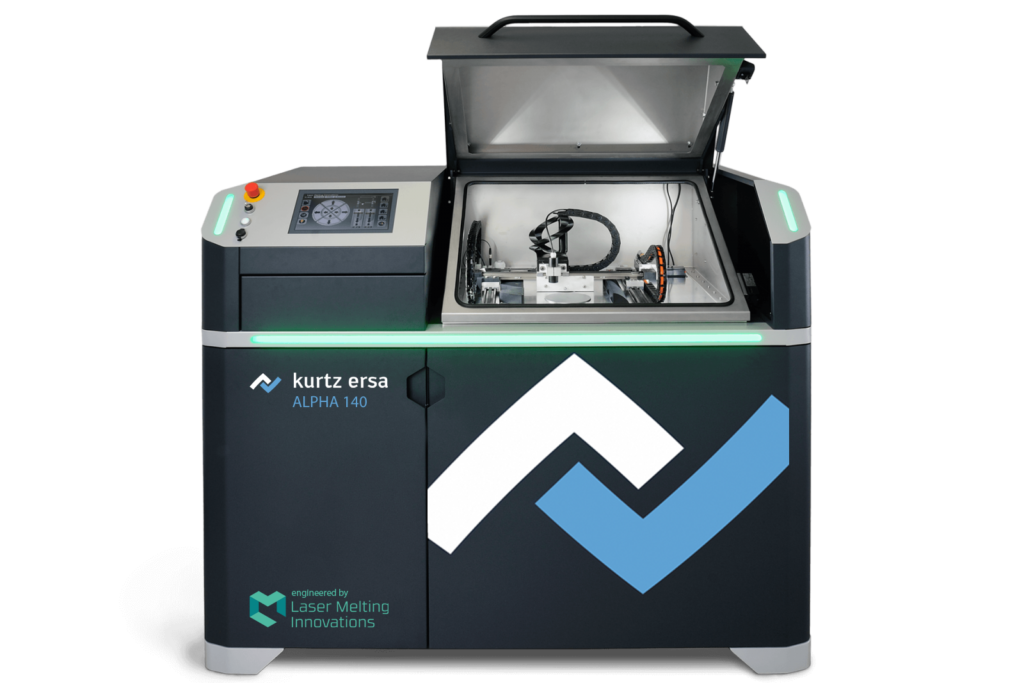
Laser Melting Innovations is another German firm, this one is a spin-out of Fraunhofer ILT is comfortably nestled in the hands of industrial molding and manufacturing equipment company Kurtz Ersa. That firm has revenues of around $230 million and 1,200 employees. The Alpha printer has open process settings and is available for purchase. The system can process some nickel alloys, stainless steel, tool steels and the team is working on aluminum.
This company has placed the optics on a motion stage and uses nitrogen as gas to lower costs when compared to the infrastructure needed for argon and the like. Laser Melting Innovations has its own software, LMI SliceAM, and integrates with Fusion 360 and Netfabb to optimize your workflow.
By working with Kurtz Ersa, the firm can offer its products globally. It is interesting to note that even though Germany is considered a relative hotbed of VC activity for Europe, these firms end up working with established companies rather than unicorns. All in all, the system seems complete and a very nifty thing indeed. But, One Click Metal has more of a complete ecosystem with sieving and the like. For many, the use of Inconel and aluminum on such a low-cost system would be very exciting.
Meltio
Meltio offers a system for both a wire and powder for low-cost metal. That is in and of itself unique and will give them much lower cost parts than other players. What’s more, it lets you use commoditized MIG welding wire for carbon steels, stainless steels, Inconel, titanium, aluminum, and coppers.
The Meltio Engine unit can be integrated with existing equipment and turn your motion stage into an inexpensive 3D printer. In doing this, the firm is offering something unique for this segment, which could see it grow faster. Do you want a metal printer on a robot arm or your six-axis router? Then Meltio will be the cheapest way for you to do this. What’s more, it will have the least expensive feedstock. The Engine also lets you add lasers.
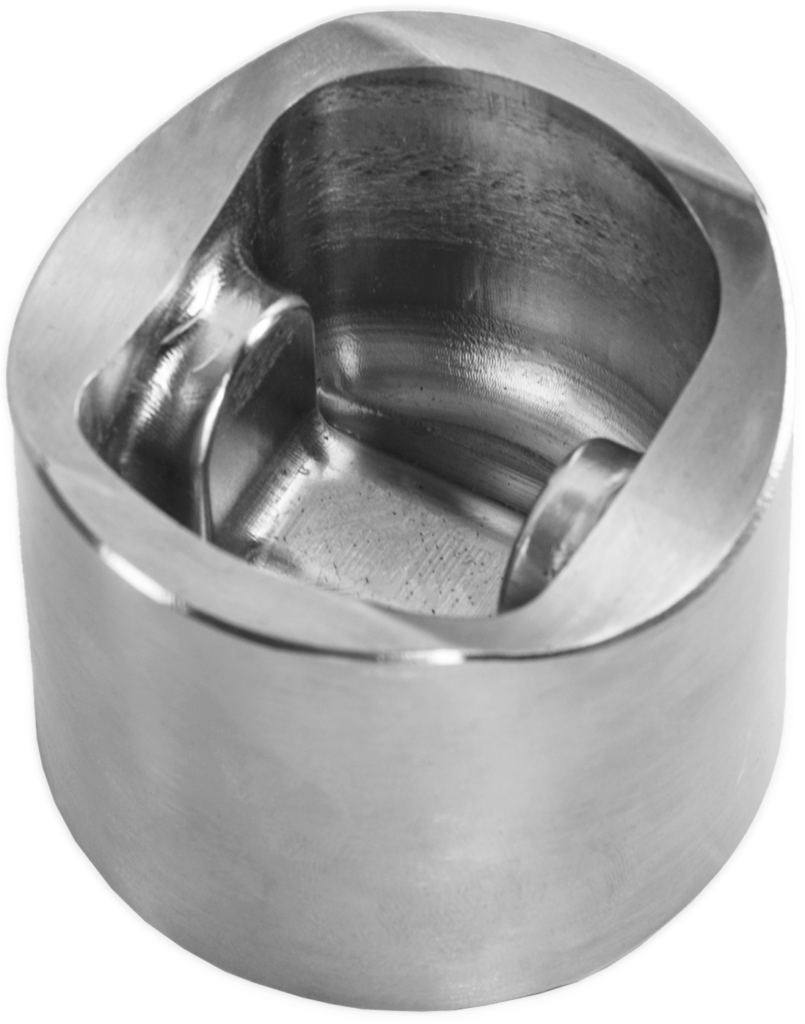
The company relies on Simplify3D for software and is generally more open than other entrants. Meltio also has an inline scan system and a standalone scan system to allow you to verify parts and perform quality control. Rather than just one printer, it has the very low-cost m450 and the larger F600 and F1000 polymer and composite units. By having the Engine and a lineup of printers, the company has a very complete machine portfolio for this segment and can cross-sell systems, as well. What I love about Meltio is the safety and low-cost of the wire feedstock. This gives the system a lot of potential access to many more materials than other printers in its class.
Sharebot

Sharebot is a hyper-innovative Italian firm that makes a wide variety of of 3D printer types. Since 2018, the team at Sharebot have been working on the MetalOne system, which is currently in beta testing. The company currently offers 316L and Cobalt Chrome. The printer works with both Nitrogen and Argon and has completely open parameters. Sharebot relies on Simplify3D for software and has not disclosed how it will distribute or support the printers.
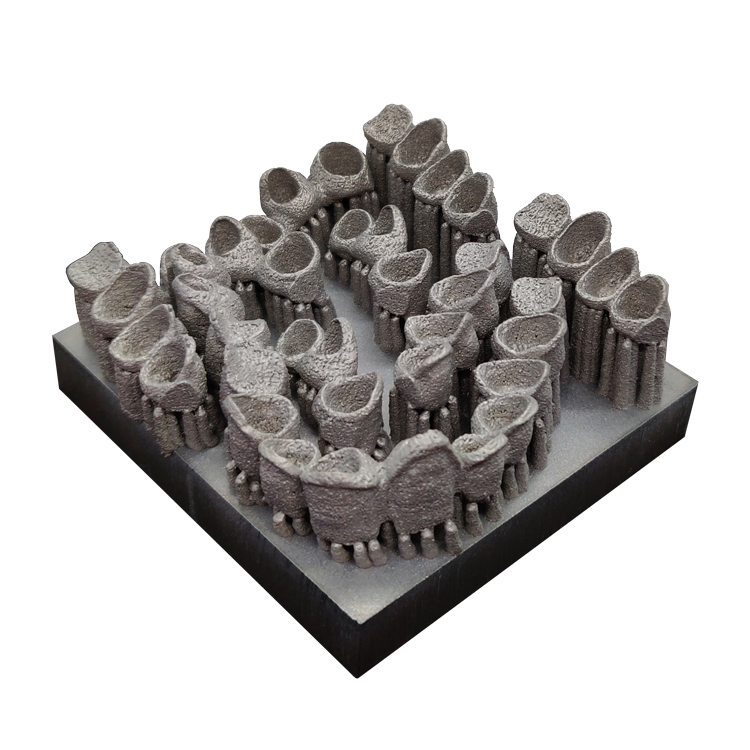
Xact Metal

Started in 2017 in Pennsylvania, Xact Metal has three PBF 3D printers on offer. A gantry based laser system is key to keeping everything low cost and 316L, 17-4 PH, 15-5 steels, 718 and 625 Inconel, Cobalt Chrome, Hastelloy X, tool steel, titanium, aluminum, bronze and copper are available. The impressive range of superalloys, aluminum, and copper are remarkable here in this segment. Its XM300C product even has multiple lasers and multiple feed chambers. Whereas the post-processing offering doesn’t seem as complete here, a lot of engineering has gone into Xact’s boxes. The company even came up with a one-of-a-kind recoating technology. For software you can pick Autodesk or Materialise.

Coherent

Lumentum recently acquired Coherent, makers of Creator3D printer, the fate of which we can only speculate on. The printer is PBF and comes with the APP SUITE CAM software. A tablet-based controller is a nice feature as is a cool circular recoating system. The printer can process titanium, aluminum, cobalt chrome, nickels and steels. One possible plus is that they say that the printer can work with precious metals, as well. It is unclear at the moment if Coherent supports the machine, as it was also reportedly no longer supported months ago.
Additec

Additec’s printer, is a teeny, tiny directed energy deposition system that uses wire feedstock to print. You can add up to four-wire feeders to the machine and a separate print head is available. It is unclear right now if the Additec printer is being supported or offered still. Let us know if it is!
FreeMelt

The nice people at FreeMelt probably didn’t know that they were in this segment unit they read this. FreeMelt offers an open-source electron beam melting (EBM) system, which is very much a complex thing with which you can do anything that you want. It is meant for labs and researchers who want to produce new materials and push the envelope. Swedish FreeMelt has a U.S. alternative in U.S. open PBF vendor OpenAdditive. All the other entrants are making simple systems that are easy to use. I would argue however that the path toward volume is open to both firms if they just make closed, easy-to-use versions of their existing systems.
FreeMelt’s experienced team has a lot of metallurgy knowledge in EBM. EBM is a very exciting technology for orthopedic implants, but is also a productive technology for aerospace parts and other technical components. There is very little in the way of niceties in the system, nor are their automation or post-processing aids. This is an open-as-it-can-get parameters unit that makes EBM accessible and allows you to take control of the process. Would you like to change your electron beam settings? Have at it. Want to look at the software, any parameter or value? Go for it. The system and architecture is very open, so could be integrated with existing software and tooling.
OpenAdditive
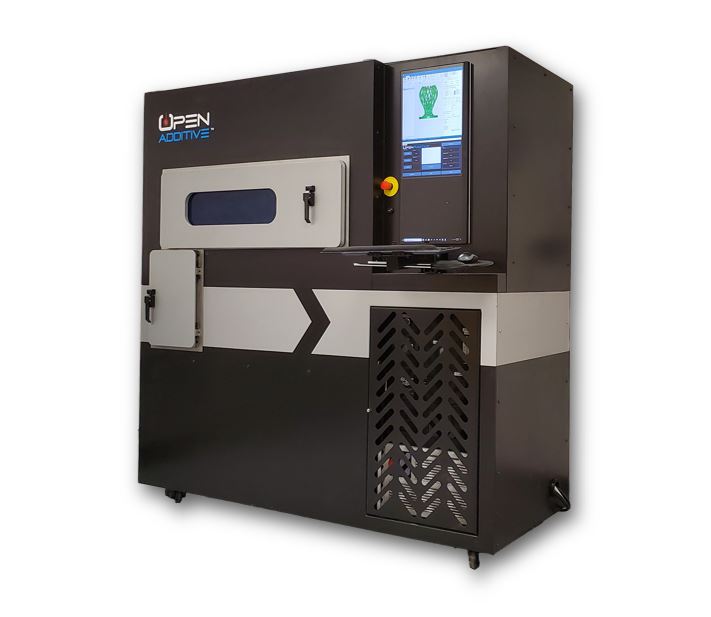
US-based OpenAdditive is a similarly open box, but for laser PBF. Its Panda system allows you to change every parameter, every software setting and hardware elements, as well. The printer comes with open machine control and a tracking package called AMSENSE while it works with 316L, aluminum, Inconel 718 and Ti64. The company offers sieving stations and other equipment, and also has service and training packages.
Subscribe to Our Email Newsletter
Stay up-to-date on all the latest news from the 3D printing industry and receive information and offers from third party vendors.
You May Also Like
Blue Laser Firm NUBURU Explores Strategic Alternatives Amid NYSE Compliance Challenges
In a strategic move reflecting the current macroeconomic landscape, NUBURU, Inc. (NYSE American: BURU), a pioneer in industrial blue laser technology, has announced its decision to explore a wide array...
Flexible Wireless Temperature Sensor Made with 3D Printing
Researchers from the University of Glasgow, University of Southampton, and Loughborough University have developed an innovative flexible temperature sensor utilizing microwaves and 3D printing technology. As detailed in an article...
3D Printing Laser Maker NUBURU Faces NYSE American Compliance Challenge
NUBURU (NYSE American: BURU), known for its innovative high-power and high-brightness industrial blue laser technology, has received a non-compliance notice from the NYSE American, formerly the American Stock Exchange (AMEX)....
3D Printing Resilience: the Case of Fiber Lasers
Since at least 2020, additive manufacturing (AM) has become more and more synonymous with the concept of supply chain resilience. In 2024, there is almost guaranteed to be a striking...
































